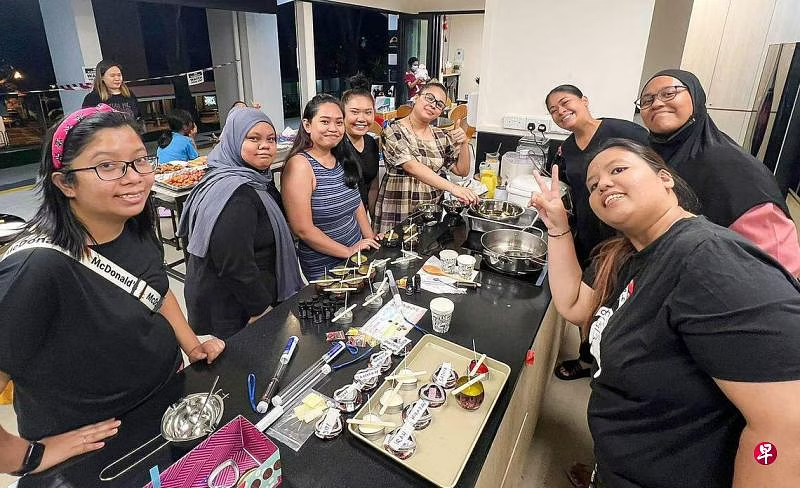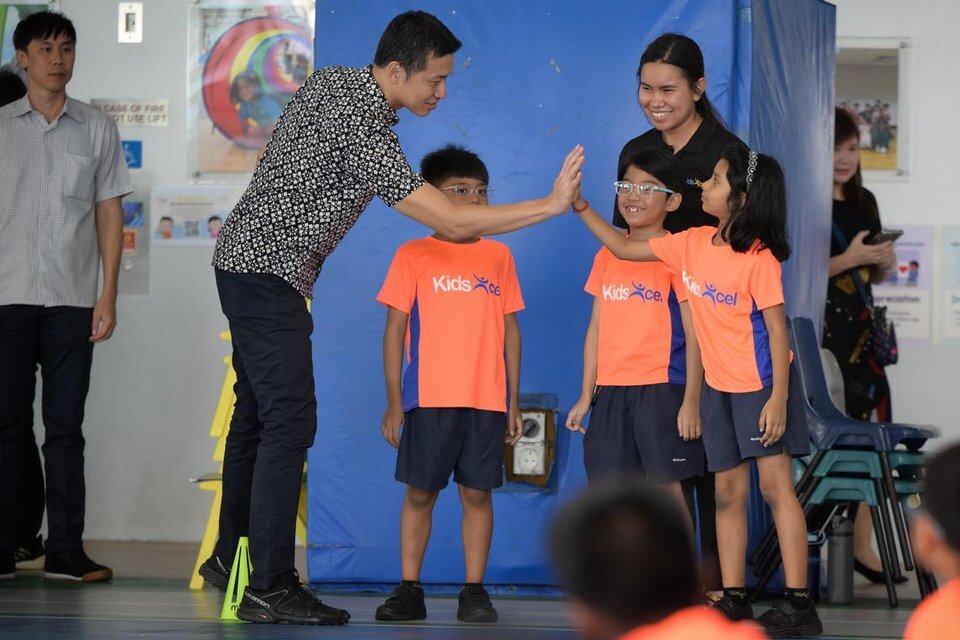Set up during the covid-19 pandemic, Sayang Sayang Fund raised $9.7m over three years, supporting over 400,000 lives


Established in 2020 as an emergency response fund during the covid-19 pandemic, the Sayang Sayang Fund (SSF) raised $9,700,000 in three years, supporting over 276 organisations and touching over 401,000 lives.
According to the Sayang Sayang Fund report published on CFS’s website, the fund disbursed $6,542,000 (67% of donations) in 2020, $2,060,000 (21% of donations) in between 2021-2022, and $1,11,900 (12% of donations) in 2023.
CFS CEO Catherine Loh shared that when the pandemic started, CFS recognised the need to provide a platform to pool together resources to help those that required support, including frontline healthcare workers, students from lower-income families, rough sleepers, and migrant workers. Through collaboration with community care organisations and various agencies, CFS was able to better understand the needs of the people and allocate assistance more efficiently.
Read our Sayang Sayang Fund report.
因应冠病疫情推出的Sayang Sayang基金过去三年筹集的约970万元,支持了276家社会服务、医疗和教育机构的援助项目,惠及约40万人。
Sayang Sayang基金由新加坡社区基金会于2020年设立,已全数拨款支持各援助项目。根据社区基金会在网上发布的Sayang Sayang基金总结报告,2020年拨出的基金款项占67%,达654万2000元;2021年至2022年拨出的基金占21%,达206万元;其余的12%在2023年拨出,达111万9000元。
2020年,基金主要用来支持前线医疗人员,以及低收入家庭、年长者和客工等有需要群体应对冠病疫情。2021年至2022年,社区基金会扩大基金的使用范围,资助慈善机构提升数码能力,适应新常态。
2023年,基金着重于加强社会在后疫情时代的韧性,例如资助有关露宿街头者、最低收入标准等社会研究项目,以及社区保健计划。
新加坡社区基金会总裁罗佩仪指出,冠病疫情暴发时,基金会意识到须集合各方的专长,并提供一个平台汇集善款来帮助有需要的群体,因此设立这个新基金。通过与各社服机构的协作,基金会能更好地了解民众的需求,更有效率地拨款协助。
Sayang Sayang基金2020年2月11日正式推介时,最初的筹款目标为50万元,其间获得企业和民众的踊跃支持,同年6月就筹得690万元。
基金共资助11项计划,这些计划包括为前线医疗人员提供德士礼券和礼包、为低收入家庭的孩子提供经济援助、为街友提供住宿和经济援助、为客工填补电话卡储值等。
当中,CommunityGrants@Work计划的拨款最多,达205万7000元,旨在帮助慈善机构应付疫情期间增加的开销,并协助机构转变运作方式,推动数码化进程。其次,是获得192万2000元的SeniorsOK@Home计划,这项计划资助可惠及弱势年长者的项目,照顾乐龄的福祉与身心健康。
基金疫后侧重加强社会支援
步入2023年的后期阶段,基金侧重加强社会支援,支持人民坚韧地走出疫情。民间团体Mum’s Collective去年获得基金的部分资助。这个互助团体由居住在红山租赁组屋的妇女组成。活动由受惠者倡导并策划,中南社区家庭服务中心为团体提供所需的协助。
Mum’s Collective旨在为低收入家庭的母亲提供一个交流平台,吐露彼此面对的问题,并一起参与烘焙等休闲活动。参与者诺希达雅(33岁)说,她通过互助团体获得力量,明白自己不是唯一面对生活困难的。有了这个支援网络,她如今能更好地处理压力,也变得更加自信。
信用:联合早报©新报业媒体有限公司。复制需要许可
This article was originally published in Zaobao here. Source: Zaobao © SPH Media Limited. Permission required for reproduction.
Established in 2020 as an emergency response fund during the covid-19 pandemic, the Sayang Sayang Fund (SSF) raised $9,700,000 in three years, supporting over 276 organisations and touching over 401,000 lives.
According to the Sayang Sayang Fund report published on CFS’s website, the fund disbursed $6,542,000 (67% of donations) in 2020, $2,060,000 (21% of donations) in between 2021-2022, and $1,11,900 (12% of donations) in 2023.
CFS CEO Catherine Loh shared that when the pandemic started, CFS recognised the need to provide a platform to pool together resources to help those that required support, including frontline healthcare workers, students from lower-income families, rough sleepers, and migrant workers. Through collaboration with community care organisations and various agencies, CFS was able to better understand the needs of the people and allocate assistance more efficiently.
Read our Sayang Sayang Fund report.
因应冠病疫情推出的Sayang Sayang基金过去三年筹集的约970万元,支持了276家社会服务、医疗和教育机构的援助项目,惠及约40万人。
Sayang Sayang基金由新加坡社区基金会于2020年设立,已全数拨款支持各援助项目。根据社区基金会在网上发布的Sayang Sayang基金总结报告,2020年拨出的基金款项占67%,达654万2000元;2021年至2022年拨出的基金占21%,达206万元;其余的12%在2023年拨出,达111万9000元。
2020年,基金主要用来支持前线医疗人员,以及低收入家庭、年长者和客工等有需要群体应对冠病疫情。2021年至2022年,社区基金会扩大基金的使用范围,资助慈善机构提升数码能力,适应新常态。
2023年,基金着重于加强社会在后疫情时代的韧性,例如资助有关露宿街头者、最低收入标准等社会研究项目,以及社区保健计划。
新加坡社区基金会总裁罗佩仪指出,冠病疫情暴发时,基金会意识到须集合各方的专长,并提供一个平台汇集善款来帮助有需要的群体,因此设立这个新基金。通过与各社服机构的协作,基金会能更好地了解民众的需求,更有效率地拨款协助。
Sayang Sayang基金2020年2月11日正式推介时,最初的筹款目标为50万元,其间获得企业和民众的踊跃支持,同年6月就筹得690万元。
基金共资助11项计划,这些计划包括为前线医疗人员提供德士礼券和礼包、为低收入家庭的孩子提供经济援助、为街友提供住宿和经济援助、为客工填补电话卡储值等。
当中,CommunityGrants@Work计划的拨款最多,达205万7000元,旨在帮助慈善机构应付疫情期间增加的开销,并协助机构转变运作方式,推动数码化进程。其次,是获得192万2000元的SeniorsOK@Home计划,这项计划资助可惠及弱势年长者的项目,照顾乐龄的福祉与身心健康。
基金疫后侧重加强社会支援
步入2023年的后期阶段,基金侧重加强社会支援,支持人民坚韧地走出疫情。民间团体Mum’s Collective去年获得基金的部分资助。这个互助团体由居住在红山租赁组屋的妇女组成。活动由受惠者倡导并策划,中南社区家庭服务中心为团体提供所需的协助。
Mum’s Collective旨在为低收入家庭的母亲提供一个交流平台,吐露彼此面对的问题,并一起参与烘焙等休闲活动。参与者诺希达雅(33岁)说,她通过互助团体获得力量,明白自己不是唯一面对生活困难的。有了这个支援网络,她如今能更好地处理压力,也变得更加自信。
信用:联合早报©新报业媒体有限公司。复制需要许可
This article was originally published in Zaobao here. Source: Zaobao © SPH Media Limited. Permission required for reproduction.
- Related Topics For You: CHARITY STORIES, CHILDREN, COMMUNITY IMPACT FUND, DIRECT AID, DONOR STORIES, EDUCATION, FAMILIES, IMPROVING EMPLOYABILITY, INCLUSIVITY & INTEGRATION, MENTAL WELLBEING, NEWS, SAYANG SAYANG FUND, SENIORS, YOUTH

.jpg)

